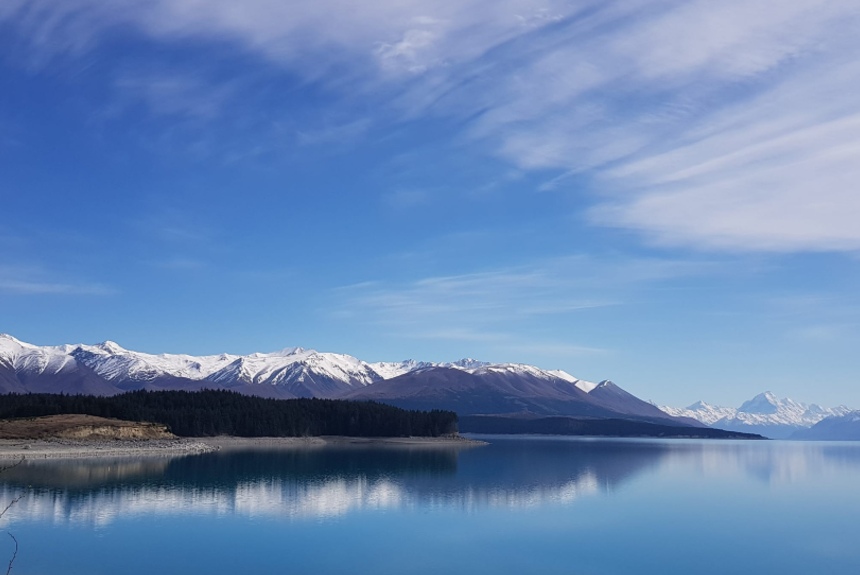
The projections of temperature increase due to climate change are a cause of concern to New Zealanders. Is New Zealand’s temperature rising? Will this trend continue in the future? What will be its consequences to the country, specifically the incidence of drought?
The answer is positive. The temperature has increased by 1 degree Celsius since 1909. It will continue to climb at 0.8 Celsius by 2040 and by 2090, a 1.6 median increase.
According to the National Science Challenges document, the range is wide, between 0.3 and 4.6 degrees, and the increase depends on the amount of greenhouse gases released into the atmosphere.
The document resulted from two Deep South National Science Challenge workshops hosted by Motu in May and June 2018.
These workshops produced seven critical questions that will form the basis for research on climate adaptation, which will be carried out through 2020. These research questions are:
- How will drought affect the future water supply?
- What are the likely incidences of drought in the regions and the nationwide drought pattern?
- Level of risk to drinking water availability in urban and rural areas?
- Impact of drought on vulnerable communities and effects on house prices and land values, among others.
- Impact of drought on agriculture, tourism, and food production
- Frequency of low flow of river and lake systems
- The incidence and length of future droughts will impact energy production and consumption, irrigation, the security of supply and cost to consumers, water quality, minimum flows, renewal investments, and fuel substitution.
Temperature increases will change the water cycle patterns, resulting in a warmer climate, intense and heavy rainfalls, changes in soil moisture content, and prolonged and severe droughts that increase or decrease precipitation and evaporation.
Drought will have the most impact on the economy. Between 2007 and 2017, the estimated economic losses from the drought were $720 million, exceeding the cost of flood damages at $120 million.
According to the document, human activity is the primary driver of climate change and will contribute to the intensity and frequency of drought, impacting urban water, primary production, and energy generation.
Drought explained
The National Science Challenges document explains drought. Simply put, it is a severe decrease in water availability. It differs from other natural disasters because of its prolonged and gradual effect, and it can happen in a single season and last for several years.
The paper also identified various dimensions of the drought, such as meteorological drought, soil moisture drought, hydrological drought, socioeconomic drought, and environmental drought. These dimensions are linked and related to each other.
The research challenge
How drought begins and what causes it is complex to determine. Simulating it presents a research challenge.
What is clear is that the recent occurrence of heat waves and heat-related events are attributed to climate change. However, how climate change affects extremes in precipitation and drought is unclear. However, there is evidence of higher atmospheric pressure and more dry days.
Drought risks in New Zealand
New Zealand is a water-rich country that does not exempt it from drought risks. Observations in the last 50 years show that:
- There is an increase in winter rainfall in some regions: Whangarei, Wellington and New Plymouth.
- Dunedin and Kerikeri have a decrease in summer rains.
- 20% of 30 sites across the country have progressively drier soils since 1970.
- The glaciers’ ice volume has decreased by 25% in the last 20 years, which can impact aquifers, hydroelectric power generation, and irrigation.
Future projections in New Zealand climate:
- increasing rainfall and winter in the west of the country and decrease in the east & north
- in summer, a wetter condition in the east and drier in the west and central North Island
- reducing river flow on the eastern side and increasing on the west side of the north and south islands.
- Reduction of snow in the southern Alps will.
- Drought is projected to increase in intensity, especially in drought-prone areas.
Role of NZ institutions
Institutions have a role in helping communities adapt and mitigate climate change. These institutions are composed of the local governments to help communities adapt to climate change, Iwi management plans, and Central governments such as the Ministry for Primary Industries, Ministry of Health, and Department of Internal Affairs to advise local governments on requirements for regional government infrastructure planning, Department of Conservation, MBIE, and also other private and non-governmental organisations.
Research is needed, and some questions
Drought will undoubtedly impact critical water for drinking and sanitation, domestic food supply, energy use, cultural identity and livelihood, and the broader system.
For New Zealand’s drought response to improve, it would require more information, and the earlier, the better, especially with infrastructure investments that need more lead time.
The country also needs to understand how to better allocate water during droughts and crises.
To better understand drought adaptations, New Zealand needs to identify what is already known and what gaps exist. It can learn from the climate adaptation practices of other countries while recognising its unique features.
Because New Zealand has always been water-rich, the country is not well-prepared for preparing for drought adaptation in the future.
Read the entire document here:
Source:
Hendy, Jo., Kerr, S., Halliday, A., et.al. (2018, November). Drought and Climate Change Adaptation: Impacts and Projections. Economic and Public Policy Research. Motu Note #31. Retrieved from https://motu.nz/assets/Documents/our-work/environment-and-agriculture/climate-change-impacts/Drought-Dialogue-Report.pdf
PHOTO CREDIT: Lake Pukaki by Audrey Zoe


Leave a Reply